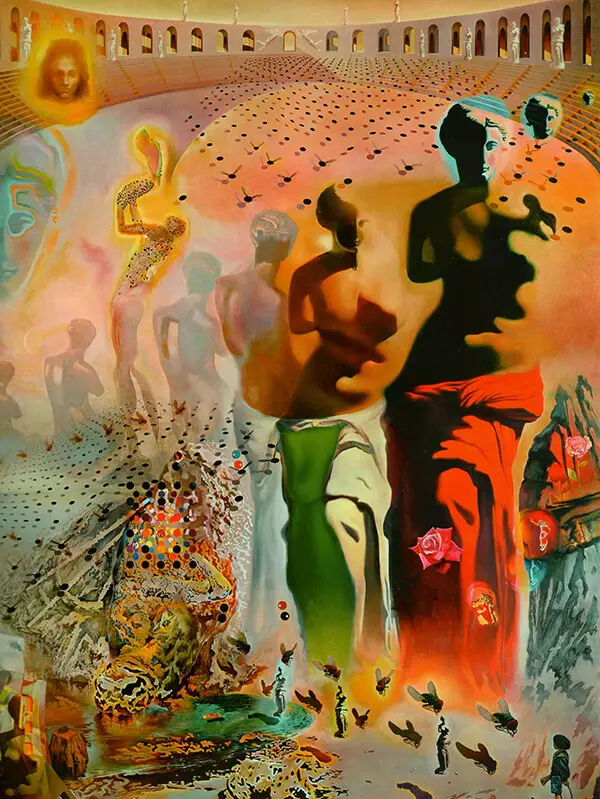Hallucinogenic Toreador displays Dali's wife's distain for bullfighting, which remains a very popular Spanish tradition. In contrast, Dali had a passionate love of bull fighting. Gala herself appears in the upper left hand of the work looking disapprovingly on the scene.
The work is biographical and reflects on Dali's life and native Spain. Dali was in is 60s when the work was completed and the work features the bullfighter Manolete, the most famous bullfighter of his day, who was killed in a bullfight at the age of 30, reflecting Dali's concerns with his own mortality.
This is a truly momentous symbolist work, complex and bright.
Set in a bullfight arena, the key content includes:
- The gadflies of St. Narciso, patron saint of Catalonia. This forms the cap, hair net and cape of the bullfighter
- A pool of the bull's blood and saliva is used to symbolise a bay with sunbather on an inflatable mattress
- The green tie of the toreador makes a visual twin of the shadows of Venus' clothing
The dead bull outlines a mountain landscape, likely to be in the Cape Creus region around Port Lligat.
Dali used this type of landscape in several other paintings, it is from an area in which he spent plenty of time, both living and also working in his nearby studio.
The Venus de Milo appears 28 times in the painting. Dali was inspired to use the image by the fact that it appeared on a box of pencils that he happened to buy during a visit to New York.
The work also reflects numerous interests of Dali. The double dog image reflects his interest in optics. The molecular diagram of the bull's head his interest in atomic science and exploding molecules form the toreador's suit of lights.
The small fading Venuses - the repetitive work he had to do at art school. The work requires careful viewing to pick out the images. For example, one of the Venus de Milos forms the nose and mouth of the matador.
What appear to be the sequins on the toreador's cloak turn out to be flies. These refer to the Spanish legend that flies would come forth from the tomb of Saint Narcissus when the country was threatened with invasion, which may reflect fears by Dali that tourism was threatening his country.
Spain is also referenced in the drapery of the Venus de Milo in the colours of the Spanish flag.


